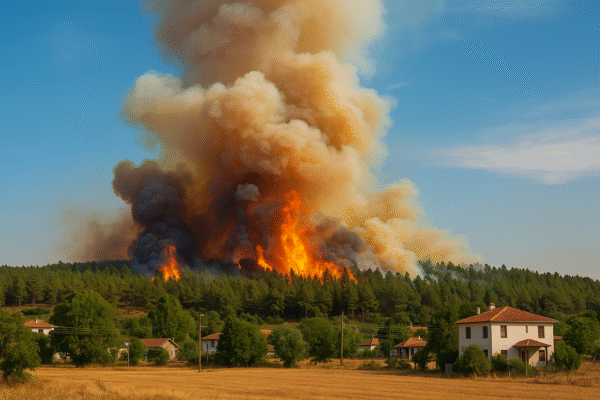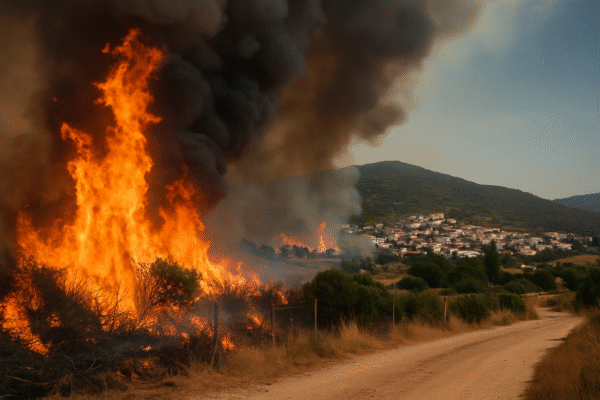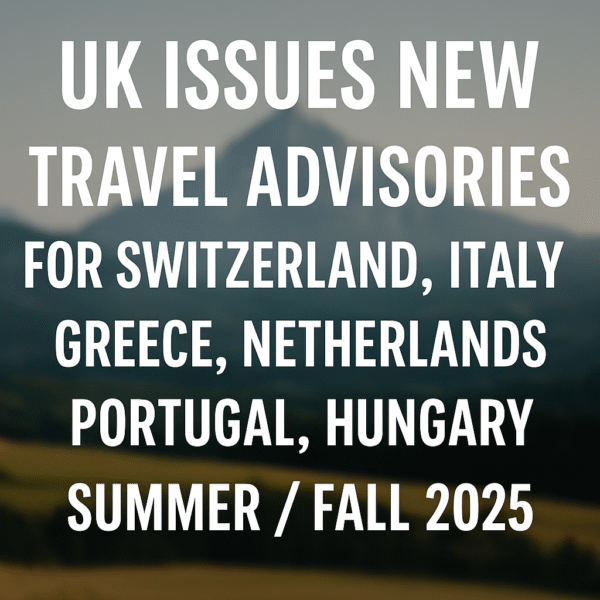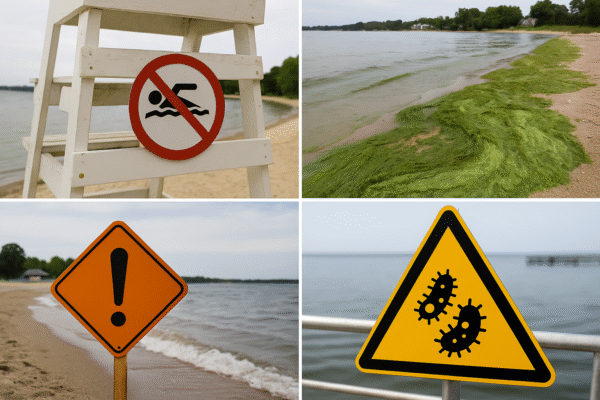Rising Waterfront Bans Across the US
This summer, tourists and families across the United States have been confronted with an unexpected challenge: beach closures caused by contaminated waters. Massachusetts, New York, and Rhode Island are among the hardest hit, with dozens of public swimming areas shut down just as the season reached its peak.
Health officials cite stormwater runoff, cyanobacteria blooms, and in rare cases, Vibrio vulnificus, as the leading causes. These closures not only disrupted weekend travel plans but also raised pressing concerns about the impact of climate change, infrastructure, and public health on recreational water use.
Massachusetts: Dozens of Beaches Shut Down
In Massachusetts, the Department of Public Health (DPH) reported that 58 public beaches were closed by mid-August, marking one of the worst years for closures in recent memory.
Popular freshwater escapes such as Lake Gardner in Amesbury, Damon Pond in Ashby, and Lake Dennison State Park in Winchendon were declared off-limits. Families who had planned trips to these spots for swimming and picnics were forced to cancel or scramble for alternatives.
Oceanfront areas also faced significant closures. Nahant Beach, Donovan’s Beach in Winthrop, and parts of Lynn’s shoreline were shut, along with inland favorites like Pearce Lake in Saugus and Learned Pond in Framingham. Even family destinations such as Chilson Beach in Franklin and Wally Beach in Salem became inaccessible.
The situation worsened with closures due to toxic algae blooms, including at Cochituate State Park in Natick, Crystal Lake in Newton, and Seymour Pond in Harwich. On Cape Cod, Santuit Pond in Mashpee was closed at two separate locations, while in central Massachusetts, Carbuncle Pond in Oxford also fell victim to harmful cyanobacteria.
Adding to the disruptions, Walden Pond’s main beach in Concord remains closed until 2025 due to a $6.1 million bathhouse construction project. Meanwhile, in Falmouth, the rare but potentially deadly Vibrio vulnificus bacteria was detected at Old Silver Beach, prompting urgent health warnings for swimmers with cuts or weakened immune systems.
Why Stormwater Fuels Contamination
Experts point to stormwater runoff after heavy rains as a leading factor in Massachusetts closures. Runoff washes pollutants—including sewage leaks, animal waste, and agricultural residue—into lakes, rivers, and coastal waters.
The DPH conducts water monitoring on a daily or weekly basis. When bacteria levels spike, beaches are closed until follow-up testing shows safe conditions. While closures often last one to two days, repeated rainfall can prolong restrictions throughout the summer.
Health Risks from Contaminated Waters
Officials warn that swimming in unsafe waters can lead to serious health issues. Common illnesses include:
- Gastrointestinal problems: diarrhea, nausea, stomach cramps, and vomiting
- Respiratory symptoms: coughing, sore throat, or difficulty breathing
- Skin and ear conditions: rashes, infections, and irritation
- Flu-like illness: fever, chills, or fatigue
Children and pets are particularly at risk. Cyanobacteria toxins can damage the liver, nervous system, and skin, posing serious health threats if exposure is prolonged.
New York: Long Island and Westchester Closures
New York beaches also faced widespread closures due to Enterococci bacteria, a strong indicator of fecal contamination.
On Long Island, closures included Benjamins Beach, Huntington Beach, Knollwood Beach, and Gold Star and Crescent Beaches. Thousands of residents who rely on these waterfronts for weekend recreation were directly affected.
In Westchester County, both public and private clubs faced shutdowns. Harbor Island Beach, Mamaroneck Beach and Cabana Club, Beach Point Club, and Coveleigh Beach were among those temporarily closed. These closures left families scrambling for alternatives in the middle of peak vacation season.
Rhode Island: Newport and Warwick Affected
The Rhode Island Department of Health (RIDOH) issued new closures on August 15, shutting down Easton’s Beach (First Beach) in Newport and Conimicut Point Beach in Warwick. These followed closures at Gooseberry Beach and Spouting Rock Beach, also in Newport.
This summer alone, Rhode Island documented 20 beach closures, with some lasting five days or more. Certain water bodies, like ponds at the Kent County YMCA, were closed for nearly two weeks in July.
Officials warn that exposure to contaminated waters can cause skin rashes, gastrointestinal illness, ear infections, and even salmonella. Those with high fevers or prolonged diarrhea are urged to seek medical care immediately.
Arizona: Road Closures Add to Travel Chaos
Beyond the waterfront, travel disruptions extended inland. In Arizona, critical road closures impacted Interstate 17 (I-17) between the Stack and Split interchanges, with weekend shutdowns affecting both northbound and southbound lanes. Sections of Loop 101 and Loop 202 were also closed, forcing drivers to rely on detours via I-10 or surface streets.
These restrictions compounded frustrations for travelers already dealing with beach bans in the northeast.
Safety Tips for Beachgoers
Health and environmental officials advise beachgoers to stay alert:
- Always check state health department updates before traveling.
- Avoid swimming after heavy rain.
- Stay out of murky or foul-smelling waters.
- Keep infants and toddlers in swim diapers.
- Prevent feeding of ducks and seagulls to reduce fecal waste.
- Never swallow water while swimming.
- Use designated paths to protect dunes and vegetation.
Even if waters are unsafe for swimming, beaches can still be enjoyed for sunbathing, hiking, volleyball, and shell collecting.
Conclusion: Summer Travel Under Pressure
From Massachusetts to New York and Rhode Island, beach closures have disrupted vacations, highlighting the growing impact of climate change, infrastructure strain, and public health risks on tourism. With stormwater runoff and algae blooms becoming more frequent, states are urging residents to remain vigilant.
As one of the busiest weekends of the summer approaches, families are advised to monitor alerts, plan alternatives, and prioritize safety. For many, the 2023 summer will be remembered not for beach fun, but for closures that tested the resilience of communities and the patience of travelers alike.
For more travel news like this, keep reading Global Travel Wire


















